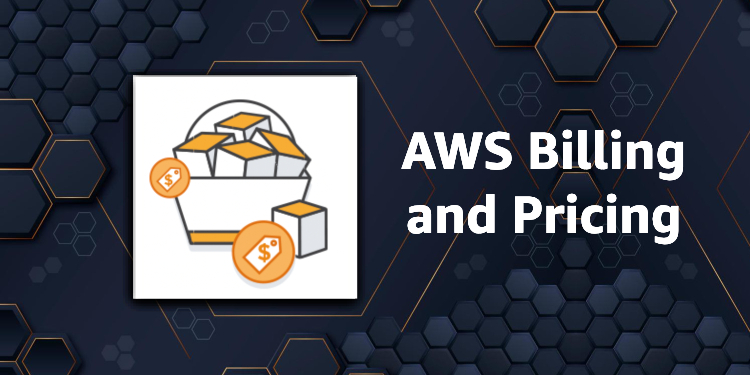Navigating the Cloud: AWS Billing & Costing Unveiled
 Sumit Mondal
Sumit Mondal
Introduction:
Happy Birthday to our cloud endeavors! As we celebrate the one-year milestone of our digital journey, it's crucial to shed light on an aspect that often lurks in the shadows – AWS Billing & Costing. While the cloud has transformed the way we operate, understanding and optimizing costs on Amazon Web Services (AWS) is an essential skill for any cloud enthusiast. In this blog, we embark on a creative exploration of the AWS billing landscape, demystifying complexities and unveiling the art of cost optimization through a hands-on example.
Section 1: Setting the Stage
AWS provides a flexible and scalable cloud infrastructure, allowing businesses to pay only for what they use. However, without a clear understanding of the billing and costing structure, one might find themselves in a financial fog. AWS billing comprises multiple components, each contributing to the overall expenditure. Let's delve into the key elements:
1.1. Pricing Models:
AWS offers various pricing models, including On-Demand Instances, Reserved Instances, and Spot Instances. Each model caters to different use cases, providing users with flexibility in resource provisioning.
1.2. Cost Explorer:
AWS Cost Explorer is a powerful tool that enables users to visualize, understand, and manage their AWS costs and usage. It provides insights into historical data, forecasts future costs, and assists in budgeting.
1.3. Tagging Strategy:
Implementing a robust tagging strategy allows users to categorize resources, facilitating accurate cost allocation and tracking. Tags act as labels, providing granular insights into resource usage.
Section 2: The Art of Cost Optimization
Now, let's embark on the journey of mastering the art of cost optimization on AWS. This isn't just about cutting expenses; it's about maximizing efficiency and ensuring every dollar spent aligns with business objectives.
2.1. Right Sizing:
Right sizing involves selecting the most cost-effective instance type based on the resource requirements of your workload. AWS offers tools like AWS Compute Optimizer to recommend optimal instance types, ensuring you don't overpay for resources.
2.2. Reserved Instances:
Strategic use of Reserved Instances (RIs) can result in significant cost savings. By committing to a one- or three-year term, users receive discounted rates compared to On-Demand pricing. Understanding your workload's stability is key to effectively leveraging RIs.
2.3. Spot Instances:
For workloads with flexible start and end times, Spot Instances offer substantial savings compared to On-Demand pricing. These instances are available at a lower cost but can be terminated if the capacity is needed elsewhere.
Section 3: Hands-On Example
Let's bring theory into practice with a hands-on example – launching an EC2 instance and optimizing its cost.
3.1. Launching an EC2 Instance:
Imagine you're starting a new project that requires a web server. Using the AWS Management Console, launch an EC2 instance. Take note of the instance type, region, and any additional configurations.
3.2. Cost Analysis:
After a week of running your EC2 instance, utilize AWS Cost Explorer to analyze the incurred costs. Identify trends, peak usage hours, and potential areas for optimization.
3.3. Optimization Steps:
Apply the principles of right sizing – assess whether the current instance type aligns with your workload's requirements. Consider converting On-Demand instances to Reserved Instances for long-term stability or explore Spot Instances for non-critical workloads.
Section 4: Continuous Improvement
AWS billing and costing is not a one-time task but an ongoing process. Establishing a culture of continuous improvement ensures that your cloud infrastructure remains cost-efficient and aligned with business goals.
4.1. Budgeting and Alerts:
Set up budgets within AWS to receive alerts when expenditures approach predefined thresholds. This proactive approach enables timely intervention and prevents unexpected cost spikes.
4.2. Monitor and Adjust:
Regularly monitor your AWS environment, keeping an eye on usage patterns and new services. As your business evolves, adjust your resources accordingly, ensuring that you're only paying for what you need.
Conclusion:
As we celebrate our one-year journey into the cloud, mastering AWS billing and costing becomes a crucial milestone. With a solid understanding of pricing models, cost optimization techniques, and hands-on examples, we empower ourselves to navigate the cloud landscape efficiently. Remember, the journey doesn't end here – embrace a mindset of continuous improvement to ensure your cloud experience remains both innovative and cost-effective. Cheers to another year of cloud success!
Subscribe to my newsletter
Read articles from Sumit Mondal directly inside your inbox. Subscribe to the newsletter, and don't miss out.
Written by

Sumit Mondal
Sumit Mondal
Hello Hashnode Community! I'm Sumit Mondal, your friendly neighborhood DevOps Engineer on a mission to elevate the world of software development and operations! Join me on Hashnode, and let's code, deploy, and innovate our way to success! Together, we'll shape the future of DevOps one commit at a time. #DevOps #Automation #ContinuousDelivery #HashnodeHero